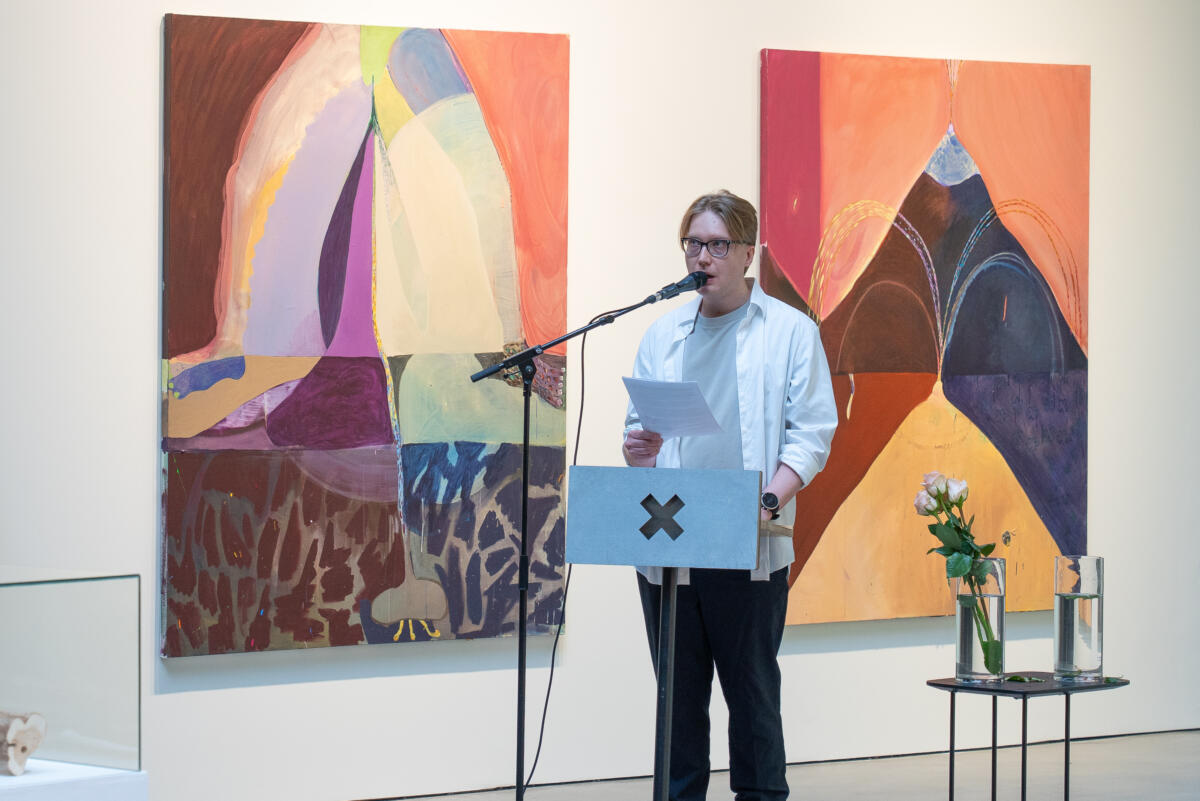Art is a way of coexisting with destruction
In his opening speech for the Kuvan Kevät 2025 exhibition, philosopher and author Pontus Purokuru explores how destruction might become an opportunity for art. Can art act as a counterforce to the demand for control and make space for sensitivity, meaning, and life amid destruction?

Dear members of the Academy of Fine Arts, artists, and friends of art, it is a profound pleasure to address you at this special occasion, the opening of the annual Kuvan Kevät exhibition.
I was asked to share some brief thoughts as you step into the art world as artists during these particularly challenging times. What makes these times challenging? Today, even the simple joy of gathering is overshadowed by clouds—clouds of disturbed earth, climate change, algorithmic control, threats of nuclear war, and technological destruction. We live in an era defined by destruction—both rapid and slow, uneven and asymmetric.
Art cannot avoid participating in this destruction. But does it also contribute to it? Does the artist, for instance, need to destroy themselves?
There has been much discourse lately about artists’ well-being, care, and how art could nurture people, including its creators. This is important: one need not be broken, traumatized, addicted, or victimized to make meaningful art. Artistic life can indeed be fulfilling, even happy.
Yet today, I propose considering destruction from another angle, inspired by literary scholar Taija Roiha’s essay “How to Go Over”: “But why be interested in well-being, when destruction also presents an opportunity? Could it offer even greater meaning, teaching us to enjoy incompleteness rather than pursue performance-oriented well-being?”
The question then is: how can destruction be an opportunity for art?
The joyful side of destruction is in its uncontrollability. Destruction cannot be solved. It is a force to be faced. It sets limits to usefulness, rationality, and ultimately life itself. In this sense, destruction is larger than life—or perhaps life itself is the greatest form of destruction, as the flow of life is so powerful it inevitably destroys.
People try to resist destruction through health, productivity, work—through everything heavy, serious, and bitter. These attempts prove illusory.
So again: how might destruction be an opportunity for art?
I’ve observed three common ways people talk about art:
First, art is analyzed relentlessly, as if it’s a heavy puzzle to be solved.
Second, art is treated as a social game, evaluated based on trends and competition.
Third, art is approached pragmatically and concretely, focusing on the craftsmanship and direct techniques of creation. This is valuable because it deals directly with the essence of art-making.
However, I propose a fourth way: engaging with art as a source of danger, as something that disrupts the intolerable ordinariness and destructively routine aspects of life. This “sense of danger” encompasses tension, surprise, disgust, and even the subversive potential of care. Tyrants rely on broken souls, thus genuine care can be dangerously subversive.
Returning to destruction: art holds a sense of danger when it directly confronts destruction. In a world dominated by obligations and performance pressures, destruction can offer relief by revealing the incompleteness of reality, compelling us to transform the unbearable present.
Art is a sophisticated way to engage with destruction. It processes and administers destruction in doses that lend life sufficient meaning and power to be livable. Art is a way of coexisting with destruction.
This year’s exhibition revolves around themes like memento mori, gifts, and sacrificial offerings, each deeply connected to destruction. Mortality is our inherent destruction, a gift is self-sacrifice for others, and a sacrificial offering is the ultimate act of expenditure. At its best, art is a sacrificial offering nurturing the fertility of destruction, not as a sacrifice causing suffering or submission, but one that transcends scarcity, competition, and stupidity. It gives us strength, sensitivity, and openness to being affected. Stay sensitive, and everything remains alive.
This text is the opening speech delivered by Pontus Purokuru at the Kuvan Kevät 2025 exhibition.